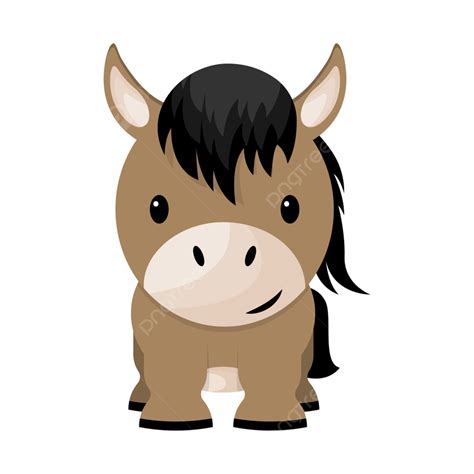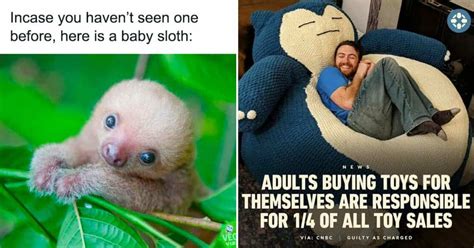
Miniature horses are captivating audiences online with their exuberant displays of energy, often referred to as “zoomies,” showcasing their playful and athletic nature.
The viral phenomenon of miniature horses exhibiting bursts of speed and agility has taken the internet by storm, with videos showcasing these tiny equines galloping, kicking, and frolicking with unbridled enthusiasm. Their high-spirited antics, commonly known as “zoomies,” have garnered millions of views, sparking widespread interest in these diminutive creatures and their unique characteristics.
According to the American Miniature Horse Association (AMHA), miniature horses typically stand no taller than 34 inches at the withers (the ridge between the shoulder blades). Despite their small stature, they possess the same physical capabilities and instincts as their full-sized counterparts, including the innate desire to run and play. These bursts of energy are a natural expression of their vitality and well-being.
“Zoomies, technically known as frenetic random activity periods (FRAPs), are bursts of energy in animals. Think a dog running in circles or a cat darting from room to room,” explains equine behaviorist Dr. Sarah Matthews. “For miniature horses, this behavior is often seen when they’re feeling particularly happy, playful, or simply full of energy.”
The videos circulating online often depict miniature horses engaging in zoomies in various environments, from lush green pastures to indoor arenas. They can be seen kicking up their heels, bucking, and galloping at surprising speeds, demonstrating their athleticism and exuberance.
One particularly popular video features a miniature horse named “Lightning” showcasing his impressive zoomies in a spacious field. The video, shared across multiple social media platforms, has garnered millions of views and comments, with viewers expressing their delight at Lightning’s infectious energy and playful antics.
“Lightning is just a bundle of joy,” says his owner, Emily Carter. “He loves to run and play, and his zoomies always bring a smile to my face. It’s amazing to see how much energy and personality he packs into such a small package.”
The popularity of these videos has not only provided entertainment but has also raised awareness about miniature horses and their unique qualities. Many viewers have expressed an interest in learning more about these animals and their care requirements.
Miniature horses were originally bred for various purposes, including working in mines, serving as pets for royalty, and assisting individuals with disabilities. Today, they are primarily kept as companions, show animals, and therapy animals.
Their gentle nature and small size make them well-suited for interacting with children and individuals with special needs. They are often used in therapeutic riding programs and animal-assisted therapy sessions, providing emotional support and physical benefits to participants.
However, owning a miniature horse is a significant commitment that requires careful consideration. They require specialized care, including appropriate housing, nutrition, and veterinary attention. It’s crucial for prospective owners to research their specific needs and ensure they can provide a suitable environment for these animals to thrive.
“Miniature horses are not just small horses; they have unique needs and require specialized care,” emphasizes Dr. Matthews. “Prospective owners should consult with experienced breeders, veterinarians, and equine professionals to learn about their specific requirements and ensure they can provide a safe and healthy environment for them.”
The viral phenomenon of miniature horse zoomies has provided a delightful glimpse into the world of these captivating creatures, showcasing their playful nature and endearing qualities. As more people discover the joy and companionship these animals can bring, their popularity is likely to continue to grow.
Expanding on the Article
The History and Development of Miniature Horses:
The history of miniature horses is diverse, marked by different breeding purposes and geographical influences. These diminutive equines weren’t always bred for companionship or show. Their origins can be traced back to various parts of the world, including Europe, where they were initially developed for specialized tasks.
In the 17th century, small horses were often seen in European mines, particularly in England and the Netherlands, where their size allowed them to navigate the narrow tunnels efficiently. These early miniature horses were essential for transporting ore and coal, showcasing their strength and utility despite their small stature. Over time, selective breeding further refined their size and temperament, making them more suitable for these confined environments.
During the 18th and 19th centuries, miniature horses gained popularity as novelty animals among European royalty and aristocracy. They were kept as pets and displayed in ornate carriages, demonstrating the wealth and status of their owners. These “toy” horses were selectively bred for their diminutive size and unique coloring, emphasizing their aesthetic appeal over their working capabilities. This period significantly contributed to the development of refined miniature horse breeds, with breeders focusing on producing animals that were not only small but also possessed elegant features and gentle temperaments.
In the United States, the development of miniature horses began in the early 20th century. Breeders imported small horses from Europe and crossbred them with native ponies and other small breeds. The goal was to create a distinct American miniature horse breed that combined the best qualities of its ancestors. These early American miniature horses were used for various purposes, including farm work and as pets. As interest in the breed grew, organizations like the American Miniature Horse Association (AMHA) were established to standardize breeding practices and promote the breed.
The AMHA, founded in 1978, has played a crucial role in the development and preservation of miniature horses in the United States. The association sets strict standards for breed registration, ensuring that miniature horses meet specific criteria for size, conformation, and temperament. These standards help maintain the integrity of the breed and ensure that miniature horses retain their unique characteristics. The AMHA also organizes shows and events, providing breeders and owners with opportunities to showcase their animals and compete for recognition.
Another prominent organization is the American Miniature Horse Registry (AMHR), a division of the American Shetland Pony Club. The AMHR also registers miniature horses and promotes the breed through shows and educational programs. The existence of multiple registries reflects the growing popularity of miniature horses and the diverse interests of breeders and owners.
Today, miniature horses are primarily kept as companions, show animals, and therapy animals. Their gentle nature and small size make them well-suited for interacting with children and individuals with special needs. They are often used in therapeutic riding programs and animal-assisted therapy sessions, providing emotional support and physical benefits to participants.
The breeding of miniature horses is a complex process that requires careful planning and attention to detail. Breeders must consider various factors, including size, conformation, temperament, and bloodlines. The goal is to produce animals that meet the breed standards and possess the desired characteristics. Responsible breeders also prioritize the health and well-being of their animals, ensuring they receive proper nutrition, veterinary care, and socialization.
Understanding “Zoomies” in Animals:
The scientific term for “zoomies” is Frenetic Random Activity Periods (FRAPs). These are sudden bursts of energy displayed by animals, characterized by rapid, repetitive movements, such as running, spinning, and jumping. FRAPs are a natural behavior observed in various species, including dogs, cats, horses, and even humans (particularly children).
The exact cause of FRAPs is not fully understood, but several factors are believed to contribute to this behavior. One primary factor is pent-up energy. Animals, especially young ones, accumulate energy throughout the day, which needs to be released through physical activity. When confined or inactive for extended periods, this energy can build up, leading to a sudden outburst of frenetic activity.
Another contributing factor is excitement. Animals often experience FRAPs when they are excited or stimulated by something in their environment. This could be a new toy, a change in scenery, or the presence of other animals. The excitement triggers a release of adrenaline and other hormones, which fuel the burst of energy.
FRAPs can also be a way for animals to relieve stress or anxiety. In some cases, the repetitive movements associated with FRAPs can help calm the animal and reduce feelings of unease. This is particularly true for animals that have experienced a stressful event, such as a vet visit or a loud noise.
In the context of miniature horses, zoomies are often observed in young foals and horses that are kept in stalls for long periods. When released into a larger area, such as a pasture or arena, they may exhibit FRAPs as a way to release pent-up energy and explore their surroundings. The sight of miniature horses galloping, bucking, and kicking up their heels is a testament to their vitality and playful nature.
Equine behaviorists emphasize that zoomies are a normal and healthy behavior for horses. However, it is essential to ensure that the environment is safe for the animal to engage in this activity. This means providing a spacious area free of obstacles and potential hazards. It is also crucial to supervise young horses during zoomies to prevent injuries.
The Role of Miniature Horses in Therapy:
Miniature horses have emerged as valuable assets in therapeutic settings, offering emotional support and physical benefits to individuals with various disabilities and challenges. Their gentle nature, small size, and trainability make them well-suited for interacting with people of all ages and abilities.
One of the primary ways miniature horses are used in therapy is through therapeutic riding programs. These programs provide individuals with physical disabilities the opportunity to ride and interact with horses under the guidance of trained instructors and therapists. Riding can improve balance, coordination, muscle strength, and cardiovascular health. The rhythmic movement of the horse can also provide sensory stimulation and promote relaxation.
Miniature horses are particularly well-suited for therapeutic riding programs due to their small size, which makes them easier to mount and control. Their gentle temperament also makes them less intimidating for individuals who may be fearful of larger horses. The bond that develops between the rider and the horse can be incredibly therapeutic, fostering a sense of trust, confidence, and accomplishment.
In addition to therapeutic riding, miniature horses are also used in animal-assisted therapy programs. These programs involve bringing miniature horses into hospitals, nursing homes, schools, and other facilities to interact with patients, residents, and students. The presence of miniature horses can have a calming and comforting effect, reducing anxiety and promoting emotional well-being.
Studies have shown that interacting with animals can lower blood pressure, reduce stress hormones, and increase levels of endorphins, which have mood-boosting effects. Miniature horses can also provide a sense of companionship and social connection, which can be particularly beneficial for individuals who are isolated or lonely.
Miniature horses can also be trained to perform specific tasks to assist individuals with disabilities. For example, they can be trained to pull wheelchairs, retrieve objects, and provide tactile stimulation. Their intelligence and willingness to learn make them valuable partners in helping people achieve greater independence and improve their quality of life.
The use of miniature horses in therapy is a growing field, with new applications and programs being developed all the time. As more people discover the benefits of interacting with these animals, their role in therapeutic settings is likely to expand even further.
Caring for Miniature Horses: Essential Considerations:
Owning a miniature horse is a rewarding experience, but it also requires a significant commitment of time, resources, and effort. These animals have specific needs that must be met to ensure their health, well-being, and happiness. Prospective owners should carefully consider these needs before bringing a miniature horse into their lives.
Housing: Miniature horses require adequate shelter to protect them from the elements. This can be a barn, shed, or run-in shed that provides protection from rain, snow, wind, and sun. The shelter should be clean, dry, and well-ventilated. Miniature horses also need access to a safe and secure pasture or paddock where they can exercise and graze. The pasture should be free of hazards, such as poisonous plants, sharp objects, and unstable terrain. Fencing should be strong and well-maintained to prevent escapes.
Nutrition: Miniature horses have specific nutritional needs that must be met to maintain their health. They require a balanced diet that includes hay, grain, and supplements. The amount of food they need will depend on their age, activity level, and overall health. It is essential to consult with a veterinarian or equine nutritionist to determine the appropriate diet for your miniature horse. Overfeeding can lead to obesity, which can cause various health problems, such as laminitis and metabolic syndrome.
Veterinary Care: Regular veterinary care is essential for maintaining the health of miniature horses. This includes vaccinations, deworming, dental care, and hoof trimming. Miniature horses are susceptible to various diseases and conditions, so it is crucial to have a veterinarian who is familiar with their specific needs. Regular checkups can help detect and treat health problems early, preventing them from becoming more serious.
Hoof Care: Proper hoof care is essential for maintaining the health and soundness of miniature horses. Their hooves should be trimmed every six to eight weeks by a qualified farrier. Regular trimming helps maintain the correct hoof balance and prevents problems such as cracks, abscesses, and laminitis.
Grooming: Regular grooming is essential for maintaining the coat and skin health of miniature horses. Brushing helps remove dirt, debris, and loose hair, preventing matting and skin irritation. Grooming also provides an opportunity to check for any signs of injury or illness, such as cuts, bumps, or skin infections.
Exercise: Miniature horses need regular exercise to maintain their physical and mental health. This can include turnout in a pasture or paddock, hand-walking, or light riding. Exercise helps prevent obesity, improves cardiovascular health, and reduces the risk of behavioral problems.
Socialization: Miniature horses are social animals and thrive on interaction with other horses and humans. They should be kept in pairs or small groups whenever possible. Regular interaction with humans helps them become well-adjusted and easy to handle.
Training: Training is essential for teaching miniature horses basic manners and skills. This can include leading, tying, grooming, and loading into a trailer. Training helps them become safe and reliable companions.
Legal Considerations: Before acquiring a miniature horse, it is essential to check local zoning regulations and ordinances to ensure that you are allowed to keep them on your property. Some areas have restrictions on the number of animals that can be kept, while others may prohibit certain types of animals altogether.
Financial Considerations: Owning a miniature horse involves various expenses, including housing, food, veterinary care, hoof care, grooming supplies, and training. It is essential to budget for these expenses before acquiring a miniature horse to ensure that you can provide for their needs.
By carefully considering these factors and providing appropriate care, you can ensure that your miniature horse lives a long, healthy, and happy life.
Ethical Considerations in Miniature Horse Ownership:
While the allure of owning a miniature horse is strong, it’s crucial to consider the ethical implications of breeding and keeping these animals. Responsible breeders prioritize the health and well-being of their horses over profit, avoiding practices that could compromise their welfare.
One significant ethical concern is the breeding of overly small miniature horses. While some breeders strive for the smallest possible size, this can lead to health problems and reduced quality of life for the animals. Extremely small miniature horses are more prone to skeletal deformities, respiratory issues, and difficulty giving birth. Responsible breeders prioritize breeding for health and soundness, rather than solely focusing on size.
Another ethical consideration is the use of miniature horses for entertainment purposes. While miniature horse shows can be enjoyable for both participants and spectators, it’s important to ensure that the animals are treated with respect and are not subjected to undue stress or harm. Overly rigorous training methods and excessive travel can negatively impact their well-being.
The popularity of miniature horses has also led to an increase in backyard breeding, where individuals breed horses without proper knowledge or resources. This can result in the production of unhealthy or poorly socialized animals. It’s essential to purchase miniature horses from reputable breeders who are committed to ethical breeding practices.
Finally, it’s important to consider the long-term commitment involved in owning a miniature horse. These animals can live for 25 to 30 years, and require ongoing care and attention. Potential owners should be prepared to provide for their needs for the duration of their lives.
Frequently Asked Questions (FAQ):
1. What exactly are “zoomies” and why do miniature horses do them?
“Zoomies,” technically known as Frenetic Random Activity Periods (FRAPs), are sudden bursts of energy characterized by rapid, repetitive movements like running, spinning, and jumping. Miniature horses exhibit this behavior due to pent-up energy, excitement, or as a way to relieve stress. It’s a natural and healthy expression of their vitality, often seen after periods of confinement or when they’re feeling particularly playful. Equine behaviorist Dr. Sarah Matthews explains that zoomies are often seen when horses are “feeling particularly happy, playful, or simply full of energy.”
2. How big do miniature horses get, and what are their typical care requirements?
According to the American Miniature Horse Association (AMHA), miniature horses typically stand no taller than 34 inches at the withers. Despite their size, they require specialized care, including appropriate housing (a clean, dry, and well-ventilated shelter), a balanced diet of hay, grain, and supplements (consulting with a veterinarian or equine nutritionist is recommended), regular veterinary attention (vaccinations, deworming, dental care, and hoof trimming), and plenty of exercise and socialization.
3. Are miniature horses suitable as pets for children?
Miniature horses can be excellent companions for children, but responsible ownership is crucial. Their gentle nature and small size make them less intimidating than larger horses, and they can be used in therapeutic riding programs. However, children should always be supervised when interacting with miniature horses, and parents should ensure they understand the animal’s needs and limitations. Miniature horses are not toys and require respectful handling and consistent care.
4. What were miniature horses originally bred for, and what are they used for today?
Miniature horses were originally bred for various purposes, including working in mines (due to their small size allowing them to navigate narrow tunnels), serving as pets for royalty, and assisting individuals with disabilities. Today, they are primarily kept as companions, show animals, and therapy animals. Their gentle nature and trainability make them valuable in therapeutic settings, providing emotional support and physical benefits to individuals with various challenges.
5. How can I ensure I am buying a miniature horse from a reputable breeder?
To ensure you are buying from a reputable breeder, look for breeders who are members of organizations like the American Miniature Horse Association (AMHA) or the American Miniature Horse Registry (AMHR). These organizations set standards for breed registration and promote ethical breeding practices. Responsible breeders prioritize the health and well-being of their horses over profit, and are transparent about their breeding practices and the health history of their animals. Ask questions about the horse’s lineage, health records, and temperament, and visit the breeder’s facilities to assess the living conditions of the horses. Avoid breeders who seem secretive or unwilling to provide information.









